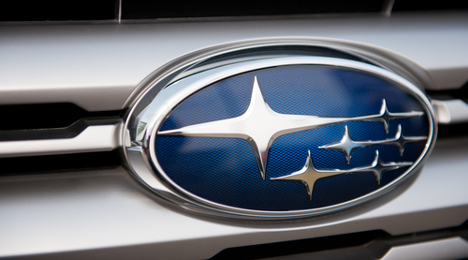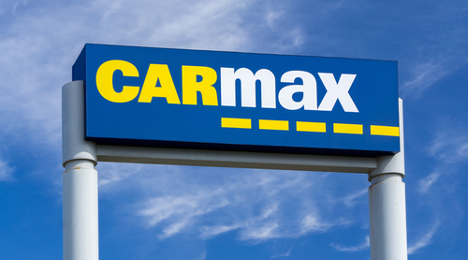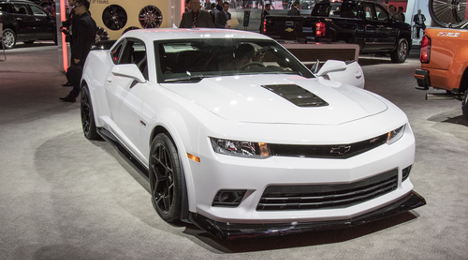AutoNation’s fourth quarter results are in as of Thursday – and taking a look at its consolidated used-vehicle units retailed, the United States’ largest automotive group moved 53,920 used vehicles last quarter, a slight, 386-unit increase over Q4 2014.
Those sales contributed to a total of 227,290 used units sold for all of AutoNation’s stores in 2015, a 5.8-percent increase over the previous year (when the group sold 214,910 used units).
The group’s used-vehicle revenue, including used vehicles both retailed and wholesaled, increased by 4.4 percent in Q4 2015 (compared to Q4 2014) to roughly $1.15 billion. By the same metric, AutoNation’s full-year used-vehicle revenue came in at roughly $4.77 billion, an 8.7-percent increase compared to the full-year results for 2014.
However, AutoNation did experience decreases in both new- and used-vehicle gross profits last quarter. Used-vehicle gross profit, also including both retail and wholesale used vehicles, fell year-over-year by 14.6 percent to $75.7 million last quarter. By the same metric, the group’s full-year 2015 gross profit for used vehicles fell by 1.9 percent to $353.7 million, compared to 2014’s results.
Mike Jackson, AutoNation’s chairman, chief executive officer and president, summed up the group’s overall condition in a statement included with the company’s 2015 results.
"In the fourth quarter, new and used vehicle margins on a combined basis declined by $217 per vehicle retailed, or 11 percent, as compared to the fourth quarter of 2014,” Jackson said. “As of year-end, our new vehicle inventories increased 13 percent on a same store basis, as compared to the prior year, driven by a 49 percent increase in premium luxury inventories. We have begun, and will continue through the first quarter, to take the necessary steps to align our costs, inventory, and pricing strategy to adjust to the current market."
Gross profit per used unit retailed was down slightly on both a quarter-over-quarter and year-over-year basis, ending the year at an average of $1,441 per vehicle in Q4 and $1,577 per vehicle for the year.
Looking at the company’s overall gross profit mixes, used-vehicle sales made up 10.8 percent of AutoNation’s mix for the year, down from 12.1 percent in 2014. From a retail perspective, AutoNation continues to make the majority of its profits from parts and service (41 percent of the mix in 2015), F&I (26.6 percent) and new-vehicle sales (20.6 percent).
AutoNation closed the year with 43 days of used-vehicle supply.
Editor's Note: For more insight into AutoNation's Q4 and full-year results, stay tuned to Monday's Auto Remarketing Today.
Used-car sales should exceed 2.78 million units this month, but they are likely to fall short of January 2015 levels by 6.8 percent, TrueCar said in an analysis on Tuesday.
On the new-car side, the company is projecting 1.15 million sales for the month, a figure that includes fleet sales. This would be down 0.3 percent year-over-year. That said, the daily selling rate for new cars in January would be up 8 percent year-over-year, given the adjustment for two fewer selling days.
TrueCar is forecasting a new-car SAAR of 17.6 million, which beats the year-ago pace by 5 percent.
In short, winter storm Jonas hurt a new-car sales month that’s traditionally slow anyway, and 2016 should still be a strong year.
“Jonas curtailed business for many dealerships on the East Coast, but January is typically one of the slowest months for the industry, especially following holiday and year-end sales events,” Eric Lyman, TrueCar’s vice president of industry insights, said in the news release. “Severe winter weather isn’t ideal for car shopping, but we see signs of strength heading into 2016 and expect consumers to buy a record 18 million new vehicles this year.”
Two of the Big 3 automakers were recognized during the 20th Annual Automotive Loyalty Awards presented by IHS Automotive this week.
General Motors was honored in the category of Overall Loyalty to Manufacturer for the 2015 model year, while Ford won the Overall Loyalty to Make category.
According to IHS, the automotive loyalty awards recognize auto manufacturers and brands for customer retention and conquest efforts during the 2015 model year.
During the model year timeframe, which stretched from October 2014 to September 2015, 8.2 million consumers returned to the market for a new vehicle. Citing record levels of loyalty rates for both brands and manufacturers, IHS found that 51.5 percent of the consumers that returned to the market repurchased from the same brand as their previous new-vehicle purchase.
59 percent repurchased from the same manufacturer (but not necessarily the same make). Both of those metrics increased by over 1 percent compared to the results from model year 2014.
IHS says it expects these loyalty percentages to continue to increase.
“With the number of consumers returning to market expected to peak in 2017, and conquest efforts and competition on the rise, an increased level of focus will be required to continue driving higher volumes of loyal customers in the market,” said Steve Had, vice president of sales and marketing solutions at IHS Automotive, during award ceremony Monday evening. “The good news is that manufacturers are consciously emphasizing loyalty programs and dedicating resources to loyalty and conquest efforts as they fight for every point of market share.”
IHS’ data also shows that 14 percent of the industry is made up of consumers, coined as “super loyalists,” that have returned to market three times to purchase from the same manufacturer. Those that have returned the last two times are called “loyalists,” and make up 26 percent of the industry.
“Our analysis, which leverages the insights of Strategic Vision’s New Vehicle Experience Study (NVES), finds that Super Loyalists and Loyalists are far less susceptible to defection following a disappointing ownership experience,” Had said. “Other customers with less frequent repeat purchase behavior are almost twice as likely to defect compared with Super Loyalists The use of our insight and analytics to further understand these consumers can be key to bringing them back into showrooms for repeat purchases.”
Here’s the overall list of automotive loyalty award winners, provided by IHS:
2015 Model Year IHS Automotive Loyalty Award Winners
| CATEGORY |
2015 MY Loyalty Award Winner |
| Overall Loyalty to Manufacturer |
GENERAL MOTORS |
| Overall Loyalty to Make |
FORD |
| Most Improved Loyalty to Make |
TESLA |
| African American Market Loyalty to Make |
FORD |
| Asian Market Loyalty to Make |
TOYOTA |
| Hispanic Market Loyalty to Make |
TOYOTA |
| Highest Conquest Percentage |
JEEP |
| Most Improved Conquest Percentage |
TESLA |
| Non-Luxury Compact CUV |
JEEP RENEGADE |
| Non-Luxury Traditional Compact Car |
NISSAN LEAF |
| Non-Luxury Traditional Mid-Size Car |
HYUNDAI SONATA |
| Non-Luxury Full-Size Half-Ton Pickup |
FORD F-SERIES |
| Non-Luxury Mid-Size CUV |
SUBARU OUTBACK |
| Non-Luxury Mid-Size SUV |
JEEP GRAND CHEROKEE |
| Non-Luxury Traditional Sub-Compact Car |
MITSUBISHI MIRAGE |
| Luxury Traditional Compact Car |
MERCEDES-BENZ C-CLASS |
| Luxury Mid-Size CUV |
LEXUS RX |
| Non-Luxury Mid-Size Van |
CHRYSLER TOWN & COUNTRY |
| Non-Luxury Mid-Size Pickup |
CHEVROLET COLORADO |
| Luxury Compact CUV |
VOLVO XC60 |
| Non-Luxury Traditional Full-Size Car |
TOYOTA AVALON |
| Luxury Traditional Mid-Size Car |
LEXUS ES |
| Non-Luxury Sport Mid-Size Car |
FORD MUSTANG |
| Non-Luxury Full-Size SUV |
GMC YUKON DENALI XL |
| Luxury Sport Car |
CHEVROLET CORVETTE |
| Luxury Traditional Sub-Compact Car |
ACURA ILX |
| Luxury Full-Size SUV |
LAND ROVER RANGE ROVER |
| Non-Luxury Sport Car |
VOLKSWAGEN GTI |
| Non-Luxury Compact SUV |
JEEP WRANGLER |
| Luxury Traditional Full-Size Car |
MERCEDES-BENZ S-CLASS |
| Luxury Mid-Size SUV |
LEXUS GX |
| Luxury Exotic Car |
FERRARI CALIFORNIA |
| Luxury Prestige Full-Size Car |
BENTLEY CONTINENTAL |
The battle between supply and demand is nothing new to dealers — and as we head further into the forecasted growth in used-vehicle supply, wholesale price softening is to be expected.
The latter is the message from ADESA Analytical Services’ executive vice president and chief economist Tom Kontos in the December edition of Kontos Kommentary, where he summed up the year quite succinctly and set the scene for 2016.
“2015 was largely a year when strong retail used vehicle and CPO demand, benign new-vehicle incentive activity, and the embrace of upstream as well as traditional auction processes among remarketers diluted the usual negative impact of growing supply on wholesale values,” Kontos said in the report.
“Further masking that impact was the displacement of off-rental program vehicle volume that appeared in the first half of the year rather than the last quarter of 2014,” he added. “These high-dollar, late-model units biased average wholesale prices upward for much of the year.”
Unfortunately, that dilution of wholesale values started to clear up by the end of the year, most notably in December, where Kontos says prices fell by upwards of 1 percent on both a month-over-month and year-over-year basis for various segments.
Let’s break it down. Wholesale used-vehicle prices in December averaged in at $9,763, a decrease of 1.2 percent month-over-month and down 1.0 percent relative to December 2014.
The only vehicle segment that showed any significant monthly increase was the minivan segment, while truck values, in general, declined less than cars and crossovers.
Looking at the various types of sellers, wholesale prices for vehicles remarketed by manufacturers were up 1.6 percent month-over-month but down 3.5 percent year-over-year. For fleet/lease consignors, both metrics were down 0.1 percent and 0.7 percent, respectively.
Within the fleet/lease consignment category, off-rental risk units showed small month-over-month and year-over-year price increases.
Three-year-old vehicles, however, did not, Kontos said. These vehicles — which he said are a “proxy for off-lease vehicles” — showed significant declines in both pricing metrics.
Dealer consignment saw a 2-percent decrease in December, compared to November, and a 1.2-percent decreased compared to December 2014.
To check out Kontos’ full breakdown of wholesale used-vehicle prices by vehicle model class, click here.
At the close of the third quarter, our nation’s seven publicly traded dealer groups collectively averaged their 25th consecutive quarter of same-store used unit sales increases.
Cox Automotive’s chief economist Tom Webb, speaking during the Manheim Index Quarterly Conference Call on Friday, says a 26th is probable, but will be a challenge to achieve.
“Slide 14 shows the seven publicly trade dealership groups and it shows that they have had 25 consecutive quarters of same-store growth in used-units retailed,” Webb said, referring to slides accompanying his presentation. “Achieving the 26th quarter will be a little bit difficult because CarMax has already reported a 0.8-percent decline in their quarter, which ends in November.
“But I still think the 26th quarter will be achieved because CarMax was more focused on supporting gross than I believe that the others will be. Which, obviously, writes in the equation, that by extension, I expect the downward sloping lines in Slide 15 will also continue.”
And the latter slide, as you probably inferred, references the used-vehicle retail gross margin for the same publicly traded dealer groups. The gross margins for used sales for the public groups is currently trending to its lowest percentage in several years — a trend Webb says has two faces.
“Now, there are two ways of looking at that gross margin trend. One could just say it’s plain ugly, and it’s dangerous,” he said. “Or, you can argue that it’s just simply the case of a competitive industry passing on its efficiency savings to the consumer. Obviously the truth lies somewhere between the two.
“But more importantly, from my perspective, I do not believe that grosses should, and hopefully they won’t, go much lower. So that means don’t look for operating efficiencies at the retail level to continue to bail out the commercial consignors. The dealers have done more than their part,” Webb said.
He says dealership proficiencies have helped that margin decline due to the lowered costs of operation that result from such efficiencies.
“A lot of that reduction in gross, I wouldn’t say was ‘willingly’ given away, but because there were tremendous increases in operation efficiencies, other dealers were able to give it away,” Webb said. “The ability to keep achieving those operating efficiencies I think are a little bit limited going forward. And certainly the benefit of exceptional growth in the throughput has probably slowed it a little bit, too.”
For more takes on Webb’s analysis, including the used-car market’s current stretch of wholesale price stability, click here.
Subaru and Ford are on top of two loyalty rankings released by Experian Automotive on Tuesday, while the ranking of individual model loyalty was dominated by luxury vehicles.
According to Experian’s analysis of roughly 6.8 million household repurchases that put pen to paper between October 2014 and September 2015, Subaru and Ford ranked highest, first and second, respectively, in both brand loyalty and manufacturer loyalty.
Looking at individual models, Land Rover’s Range Rover was the model with the most repeat buyers (48.2 percent).
As an overall manufacturer, Toyota ranked third-highest in customer loyalty — but on a brand level, Mercedes-Benz was the third-highest overall in brand loyalty while also ranking first in the luxury brand rankings.
“It’s exciting to see that manufacturers’ efforts to improve owner loyalty are working,” said Brad Smith, director of automotive statistics and consulting at Experian. “Over the last few years, loyalty rates have increased, and these improvements are key to the industry. Understanding rates of consumer loyalty among vehicle brands, makes and models helps to drive better business decisions, such as a dealer selecting inventory and targeting advertising or a manufacturer making adjustments to a vehicle’s design and creating more competitive promotional strategies.”
Here are the top 10 loyalty rankings for each metric, provided by Experian:
Manufacturer Loyalty Top 10
| Manufacturer |
Loyalty Rate (%) |
| Subaru |
67.7 |
| Ford |
67.5 |
| Toyota |
67.3 |
| General Motors |
67.2 |
| Fiat Chrysler |
65.5 |
| Daimler |
64.9 |
| Kia |
63.2 |
| Honda |
61.3 |
| Hyundai |
61.3 |
| Nissan |
61.2 |
Overall Brand Loyalty Top 10
| Brand |
Loyalty Rate (%) |
| Subaru |
67.7 |
| Ford |
66.7 |
| Mercedes-Benz |
65.1 |
| Toyota |
63.5 |
| Kia |
63.2 |
| Hyundai |
61.3 |
| Nissan |
61.1 |
| Chevrolet |
60.7 |
| Lexus |
60.7 |
| Honda |
59.9 |
Luxury Brand Loyalty Top 10
| Brand |
Loyalty Rate (%) |
| Mercedes-Benz |
65.1 |
| Lexus |
60.7 |
| BMW |
57.4 |
| Porsche |
57.2 |
| Lincoln |
57 |
| Audi |
54.7 |
| Land Rover |
51.6 |
| Cadillac |
49.2 |
| Infiniti |
45.7 |
| Acura |
43.8 |
Model Loyalty Top 10
| Model |
Loyalty Rate (%) |
| Land Rover Range Rover |
48.2 |
| Mercedes-Benz S Class |
46.6 |
| Lincoln MKZ |
44.8 |
| Mercedes-Benz 2500 Sprinter Van |
44.8 |
| Nissan Leaf |
44 |
| Ram 1500 |
42.9 |
| Lexus RX 350 |
42.7 |
| Hyundai Genesis |
42.5 |
| Kia Soul |
42 |
| Subaru Forester |
41.1 |
Some other interesting facts found by Experian’s study include the following:
- North Dakota is the state with the most brand-loyal customers (67.2 percent), followed by Michigan (66.4 percent) and Iowa (65.8).
- 69 percent of lease customers stayed loyal to their brands during the timeframe of Experian’s study, followed by 56.9 percent of consumers with loans.
- Customers who finances with manufacturer captive finance companies (Ford Credit, Toyota Financial, etc.) were more loyal (63.8 percent purchased same brand again) compared to customers with independent bank loans (58 percent).
CarMax noted a slowdown in its stores’ foot traffic during its fiscal third quarter, resulting in a decrease in same-store used-vehicle sales.
However, the retailer still tallied an increase in overall used-car sales with its new rooftops added in the last year.
In fact, the company sold over 154,000 used units overall last quarter, resulting in its best-ever Q3 used unit sales total.
That averaged out to roughly 340 cars sold per month for each store.
Getting into specifics, CarMax president and chief executive officer Tom Folliard pointed out during the company’s mid-December conference call that although used unit sales in comparable stores fell by 0.8 percent in the third quarter, total used units increased by 3.2 percent.
“As you saw, we had a challenging third quarter, due primarily to slightly negative used-unit comps,” Folliard said.
“Our lower used-unit comps were primarily a result of modestly lower traffic in our stores, partially offset by better conversion,” he continued.
CarMax attributed the slowdown in traffic to the following:
- A decrease in supply of 5- to 10-year-old vehicles
- Very aggressive promotions and lease offerings on new vehicles that appear to pressure sales of zero- to 1-year-old cars
- An increase in the wholesale prices of SUVs and trucks, so some don’t represent a “good value” for its customers
- A shift to fewer lower-credit customers and more prime-credit customers
Eighty-four percent of CarMax’s sales were zero- to 4-year-old vehicles in Q3, compared to 74 percent a year ago. SUVs and trucks made up 23 percent last quarter, down from 25 percent by the same metric a year ago.
During the company’s conference call, one analyst asked if the lower number of SUVs and trucks sold was due to a higher number of leases, resulting in fewer of the vehicles making it back to auction and thus becoming available to CarMax. Folliard noted that too many leases couldn’t hurt CarMax’s options at the auction because there are far too many for dealers to take on.
“Well, it’s something we’ve lived through before, in terms of percent of new-car sales that are leased. I think the number now is around 30 percent,” Folliard said. “It’s been this high, at times, before. Generally, what that means is that two or three years down the road, those cars will come back to the market in kind of a more organized way, and dealers won’t be able to absorb the volume that comes back and a lot of those cars end up at auction.
“That’s what’s happened historically, and we’ve been able to take advantage of that in the past. I never look at a high-lease environment as a negative for us when you think of supply two or three years later,” he continued. “If you think about the cycle of people getting out of a new car, if it remains that people get out of that car every three to five years, it really doesn’t make any difference whether it comes back through a lease channel or it comes back as an individual car, eventually they end up in the open marketplace, and we have an opportunity to buy them.”
CarMax did point out that good examples of trucks and SUVs, at favorable prices, were hard to come by in Q3, due to their high values at auction. Folliard doesn’t believe it will be that way forever.
“Prices were pretty high during the quarter. As you know, we buy a lot of cars at the auction and our buyers are trying to make sure we always deliver a great value to our customers,” he said. “There were times during the quarter where we just didn’t think it was worth overpaying at the expense of giving a great value to the consumer.
“You know, I think this is probably short lived. Obviously it’s been driven by low gas prices. We’ve seen bigger increases in new-car sales as it relates to SUVs and trucks compared to the used-car market increases. But, you know, ultimately all of these cars will come back into the market at some point.”
Plenty of stores on tap
CarMax opened two stores in existing markets in the third quarter, including its sixth store in Houston and its second store in Minneapolis. The company also relocated one store to the Washington D.C. and Baltimore market, with two more joining the Boston market shortly after the close of Q3.
In addition to those two Bostonian stores opened in December, CarMax plans to open three more stores in its fourth fiscal quarter (which ends Feb. 29) and an additional 11 stores in the next fiscal year.
To check out CarMax’s full Q3 results, click here.
Citing historical trends, NADA Used Car Guide points out that November saw an easing in used-vehicle depreciation, staying the course for the typical seasonal pattern of the industry. November’s depreciation – 1.9 percent – was noticeably lower than October’s 2.7-percent drop.
In the December edition of Guidelines, NADA UCG’s seasonally adjusted used-vehicle price index rose 1 percent compared to last month, to 123.8. Year-to-date, the index falls just 0.2 percent shy of the index’s all-time high averaged last year.
"It's normal for used-vehicle depreciation to slow during the end of the year,” Jonathan Banks, NADA UCG’s executive analyst, said in the analysis. “That said, while the slow is normal for the month, it was steeper than last November's 1-percent slide."
Diving a bit deeper, compact cars saw the biggest hit last month, falling by an industry high 2.7 percent in November, continuing its trend of dropping roughly 3 percent each month for the last seven.
While depreciation for the industry, as a whole, stood at 13.2 percent YTD at the end of November (compared to 12.7 percent for 2014), let’s take a look at all of the segments’ price drops last month, according to NADA UCG:
Change in Wholesale Used-Vehicle Prices – Oct. vs. Nov. 2015
| Segment |
Price Drop Percentage (all values negative) |
| Compact Car |
(2.7) |
| Large Car |
(2.3)
|
| Subcompact Car |
(2.1) |
| Luxury Mid-Size Car |
(2.1) |
| Luxury Compact Car |
(2.0) |
| Industry Average |
(1.9) |
| Mid-Size Van |
(1.9) |
| Luxury Mid-Size Utility |
(1.7) |
| Luxury Compact Utility |
(1.6) |
| Large Pickup |
(1.6) |
| Mid-Size Utility |
(1.6) |
| Compact Utility |
(1.4) |
| Mid-Size Car |
(1.4) |
| Mid-Size Pickup |
(1.1) |
| Luxury Large Car |
(1.1) |
| Large SUV |
(0.8) |
Year-to-date auction volume, by the end of November, stood at 3.83 million units, up 4 percent compared to the same period last year.
Looking forward, NADA UCG predicts that the prices for used vehicles aged zero to 8 years will fall roughly 1 percent in December compared to November. Zooming in to the segment level, the organization also predicts that subcompact and compact cars will drop by 1 percent, more than any other mainstream segment, while both luxury cars and utilities are expected to lose 1 to 1.5 percent in December.
January prices are expected to remain flat before increasing approximately 0.5 percent in February.
When it comes to a vehicle’s retained value from new to used, volume is important — but selling more of a vehicle doesn’t necessarily imply its value will stay. Even if the product is spectacular, perceived quality and new quantity sold do not go hand in hand.
This is one lesson that Subaru and Lexus have apparently learned, as both were today named by Kelley Blue Book for the latter’s 2016 Best Resale Value Award winners for best brand and best luxury brand, respectively.
Auto Remarketing chatted with Eric Ibara, KBB’s director of residual values, to see why.
“I guess the simple answer would be that they make great vehicles that people want. There are a lot of brands that make great cars,” Ibara said. “I think what we’ve learned is that making great cars is not sufficient. You also need to manage the way in which vehicles are marketed and sold. And what these brands do very well, I think, is they match their production with the market demands.
“They don’t overproduce the vehicles, and they’re also marketing the vehicles in a way that enhances the value of the vehicles. So they’re not discounting their vehicles to get more volume.”
KBB's 2016 Best Resale Value: Top 10 Cars
| Chevrolet Camaro |
Subaru Forester |
| Chevrolet Colorado |
Subaru WRX |
| GMC Canyon |
Toyota 4Runner |
| GMC Sierra |
Toyota Tacoma |
| Jeep Wrangler |
Toyota Tundra |
And if you take a look at the top-10 list of vehicles from the 2016 model year that KBB expects to retain the highest percentage of their sticker values, you probably won’t be surprised that eight out of the 10 are trucks or utility vehicles. What may surprise you, however, is that five of the vehicles expected to depreciate the least are from domestic automakers.
With four of those five being manufactured by General Motors, we asked Ibara if he was surprised.
“I think that people could be surprised by that. You don’t normally think of domestic brands when you think of vehicles that retain their value,” he said. “But I think that ever since GM went through bankruptcy they really have changed the way in which they approach the market. I sense, and I see, that they’re doing a better job of matching production to demand. They’re not overproducing vehicles and they’ve cut back on the volume of vehicles that they send into daily rental.
“I think these are all good signs but I guess, first and foremost, they’re making vehicles that are very appealing when you see the vehicles that have come to market over the last few years, like the Tahoe and like the Canyon and Colorado,” he continued. “You can see that the vehicles are much improved over what they’ve offered in the past.”
Those with a keen eye that follow KBB’s resale values will notice a first-time inclusion on the list: Tesla.
Ibara says that used-car transaction data for Tesla, up until recent times, was a bit hard to come by. But now that the situation has been rectified, as Ibara put it, KBB is noticing that Tesla’s Model S isn’t seeing as hard a hit in the used market as the rest of the electric vehicle segment is currently experiencing.
“The electric vehicle segment is very interesting,” Ibara said. “We are seeing EVs depreciate much faster than their gasoline-engine counterparts, where one exists. We think it’s a function of the federal tax credit that all these vehicles qualify for and we also think that the early adopters who are buying the electric vehicles want a new car. We don’t see a lot of early adopters gravitating toward used electric vehicles and as a result their depreciation is very steep, for the most part. The Model S is an exception to this rule.”
So what’s a “safe” segment to invest in, as a used-vehicle dealer? KBB expects for trucks and sport utility vehicles to remain popular for years to come — a trend that Ibara says started before oil prices dropped the favorable level they are today.
“We think it’s a trend that will be around for a while,” he said. “Oil is trading around $35 a barrel right now, and there’s really no sign that it’s going to end that streak any time soon. We’re thinking that consumers will continue to prefer sport utility vehicles and that will make them more desirable five years down the road.”
Here's the full list of KBB's 2016 Best Resale Value Awards by vehicle category:
KBB's 2016 Best Resale Value: By Vehicle Category
| SUBCOMPACT CAR: Honda Fit |
PLUG-IN VEHICLE: Tesla Model S |
| COMPACT CAR: Subaru Impreza |
COMPACT SUV/CROSSOVER: Jeep Wrangler |
| SPORTY COMPACT CAR: Subaru WRX |
MID-SIZE SUV/CROSSOVER: Toyota 4Runner |
| MID-SIZE CAR: Subaru Legacy |
FULL-SIZE SUV/CROSSOVER: Chevrolet Tahoe |
| FULL-SIZE CAR: Toyota Avalon |
LUXURY COMPACT SUV/CROSSOVER: Porsche Macan |
| ENTRY-LEVEL LUXURY CAR: Lexus RC |
LUXURY MID-SIZE SUV/CROSSOVER: Lexus GX 460 |
| LUXURY CAR: Lexus GS |
LUXURY FULL-SIZE SUV/CROSSOVER: Lexus LX 570 |
| HIGH-END LUXURY CAR: Porsche Panamera |
HYBRID SUV/CROSSOVER: Lexus RX 450h |
| SPORTS CAR: Chevrolet Camaro LT |
MID-SIZE PICKUP TRUCK: Toyota Tacoma |
| HIGH PERFORMANCE CAR: Chevrolet Camaro SS |
FULL-SIZE PICKUP TRUCK: Toyota Tundra |
| HYBRID/ALTERNATIVE ENERGY CAR: Lexus ES 300h |
MINIVAN/VAN: Toyota Sienna |
Looking back on November’s wholesale results, the picture painted is very much similar to previous months: Average auction prices were up month-over-month but flat year-over-year. And the uptick was largely due to truck prices.
Wholesale vehicle prices in November averaged $9,883, an increase of 1.1 percent compared to October. This was 0.1 percent higher than year-ago figures.
This was reflected in ADESA Analytical Services’ monthly analysis, provided by Tom Kontos, who pointed out in his Kontos Kommentary that the “strong retail demand,” especially in the certified pre-owned area, is what is maintaining the price levels despite the increasing supply.
“In short, data and other analysts are increasingly validating comments made here for many months about inevitable price softness from growing used-vehicle supply,” Kontos said. “Also as noted repeatedly here, the major saving grace keeping prices from falling further and sooner has been strong retail demand, especially for certified pre-owned vehicles.”
Kontos also pointed out that the softer pricing conditions are hitting institutional consigners more than dealers, “who have the option of retailing vehicles and only wholesaling units for which they can obtain attractive sales prices.” He said this advantage was show via strong month-over-month and year-over-year auction performance for dealer consignors.
To that end, the results for November show that the average wholesale prices for used vehicles remarketed by manufacturers were up 3.1 percent month-over-month and 4.3 percent year-over-year — and Kontos drew attention to the fact that, “manufacturers held out for their asking prices by often selling less than 50 percent of the units offered.”
Looking at vehicles in the 3-year-old segment, which Kontos used as a proxy to represent off-lease vehicles, the prices were down 3.2 percent month-over-month in November, and 9 percent year-over-year.
Utilizing data provided by NADA, Kontos showed that used-vehicle sales by franchised dealers increased 4.1 percent year-over-year while independent dealers saw their sales increase by 5.4 percent, both of which were down month-over-month.
According to figures from Autodata, CPO sales decreased by 13.8 percent month-over-month in November and 4.7 percent on a year-over-year basis. Despite that drop, overall sales remain up 8.7 percent year-to-date.












